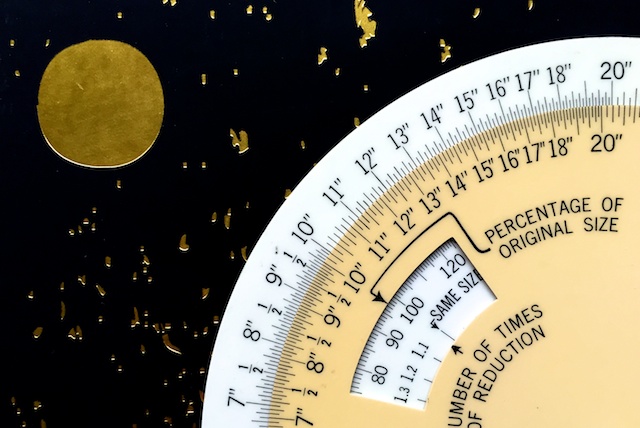Sometimes the page size of a book must be scaled down after the pages have already been laid out, usually for cost reasons. This post discusses the ramifications of doing so, and introduces two new Bookmobile online calculators.
Reasons for Resizing a Book
You’re Printing a Book In North America That Was Originally Printed In Europe
European publishers and printers use ISO standard page sizes, which are based on millimeters, and a whole different system of standard sheet sizes. If a book originally printed in Europe is to be reprinted in North America, frequently the best way to handle it is to rescale the pages to fit a North American standard page size. For example, the ISO A5 size is 148mm x 210mm, or 5-13/16” x 8-9/32”. In North America, this size page would typically be imposed the same way as a 6” x 9” page, and the extra would be trimmed off as waste. The alternative would be to scale it down to fit a more economical standard size such as 5-1/2” x 8-1/2”. Rescaling the A5 page at 95% creates a page that is approximately 140mm x 200mm, or 5-1/2” x 7-7/8”, which will run at the more economical imposition.
You’re Printing A Book on a Digital Press That Was Originally Designed for Offset
Sometimes it happens there is not enough demand for a reprint for the minimum quantities dictated by an offset run, for example, but the quantity is easily accommodated by a digital run. But some oversize books that are printable with an offset book printer may exceed the range of the equipment typically installed in a digital book printing plant. Usually, the constraint is in binding and trimming equipment rather than presses. Rescaling the book to fit digital printing can then be a good option.
The Book’s Budget Exploded
Sometimes in the early planning stages for a book, a relatively uneconomical page size is allowed for on the basis that the low number of pages in the book makes up in cost savings what the odd page size costs. If, as has been known to happen, the actual page count turns out to be much higher than the original estimates and revised printing quotes result in sticker shock, scaling the book down to a more economical size can be an option to help with the budget.
The Relationship Between Page Size and Printing Cost
From a cost perspective, the optimum page size is one that prints as many pages as possible on a sheet (or roll) of paper running through a press. A fraction of an inch can make a big difference. For example, black-and-white digital presses can commonly print four 6” x 9” pages with bleeds on one side of a 12-1/2” x 18-1/2” sheet of paper. The 12-1/2” x 18-1/2” sheet itself can be cut out of a standard 25” x 38” parent sheet coming from the paper mill. If you increase the page size to 6-3/8” x 9”, the increased width means that only two pages can be printed at a time on one side of a sheet. That means that for the same amount of expensive press time, you only get half as many pages printed. Also, the paper for the 6-3/8” x 9” pages no longer divides neatly into that standard 25” x 38” mill sheet, so there will be extra cutting time and more wasted paper. The same holds true for roll-fed digital presses, which typically print three 6”-wide pages across on the roll: increasing the width to 6-3/8” means only two pages can be printed across the roll. That 3/8 of an inch makes a big difference in cost!
Rescaling is done by simply opening the print PDF in Acrobat and exporting it as a new PDF at the required scaling factor, as expressed as a percent of the original size. Be sure to pay attention to all the other settings when saving the new PDF—image resampling, etc. Have your printer do the reduction if you have any concerns.
When Not to Scale Pages Down
Obviously, if you scale pages down too far, the appearance of type and images can suffer. A reduction to less than 90% is probably asking for some kind of trouble. In any case, it is easy to test the reduction: just print out pages at the proposed scaling factor on an office laser printer and trim to the final page size. If it looks okay, scaling down the book by that factor should look okay.
Our New Online Page Resizing Calculators
To make it simpler for our customers—and staff!—to consider and calculate rescaling books, we’ve created two new online calculators designed for the specific purpose of rescaling a book to fit Bookmobile’s maximum possible page size. The calculators factor in not only the original page size, but the number of pages, the text paper stock, any inserts, the binding type, any flaps for paperbacks or dust jackets. Here they are:
Paperback Page Resizing Calculator
Hardcover Page Resizing Calculator
Need a printing quote or more information?
I’d be happy to answer questions—you can contact me via email. I welcome any feedback, including that pointing out my errors! You can request a printing quote here.
Don Leeper is founder and CEO of Bookmobile, which has provided design, printing, eBook and distribution services for book publishers since 1982.

